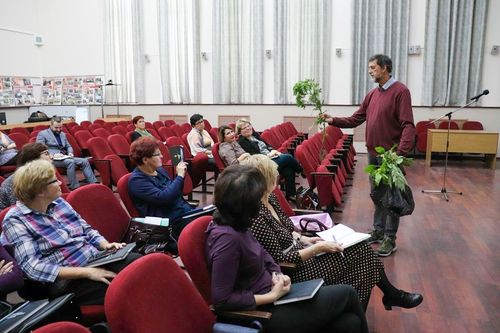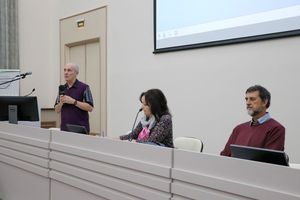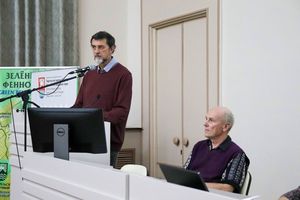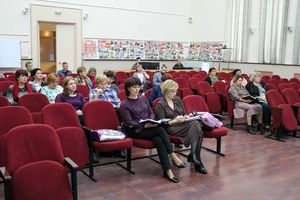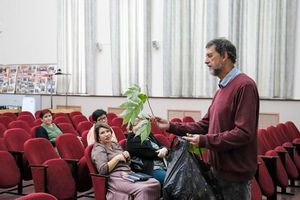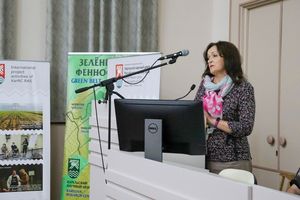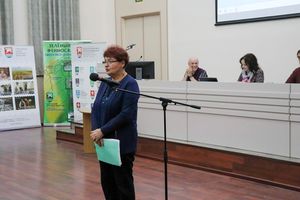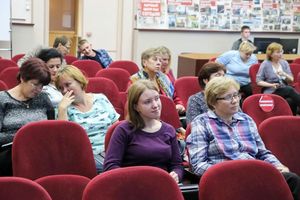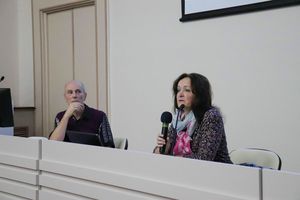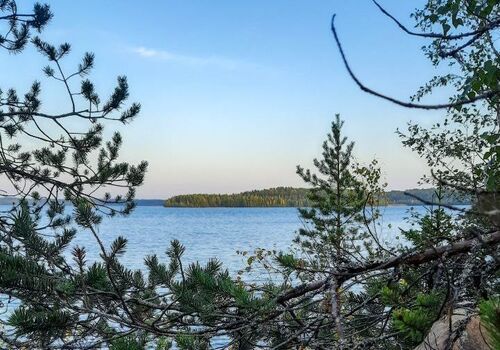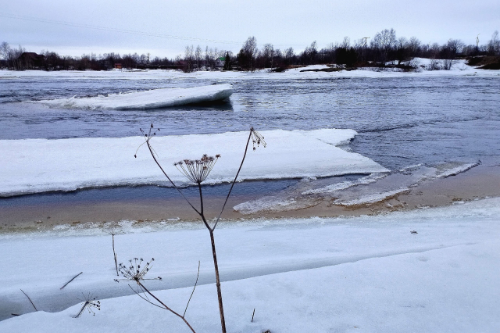The project’s research leader, Leading Researcher at the Forest Research Institute KarRC RAS Alexey Polevoy told that the DIAS project was implemented collaboratively by Karelian and Finnish scientists. He also introduced the specialized web portal https://dias.krc.karelia.ru, where detailed information about invasive species in Karelia is gathered. Users can upload reports of their encounters with invasive species to this portal, helping augment the database, which is another output of this project.
Another speaker was the book’s scientific editor, Chief Researcher at the Institute of Biology KarRC RAS Oleg Kuznetsov. He mentioned that the book was prepared by a team of over 30 authors. Entries in the book contain the morphological description of species, features of their biology, information about the natural distribution and the history of dispersal in Russia and Karelia, role in ecosystems, harmfulness, and control methods. The book also provides photographs representing the species and their record maps.

Oleg Kuznetsov told about the species’ invasion pathways. Insects, e.g., can be brought to a region with planting stock or foods. Alien dispersals are promoted by climate warming. Thus, in the 1990s the distribution of the boreal tick – vector of tick-borne encephalitis, was mid-boreal Karelia. Its current range has expanded to cover both western parts of the Republic and northern taiga.
The story of invasive species was continued by Leading Researcher at the Forest Research Institute KarRC RAS Alexey Kravchenko.
– The term invasive alien species is applied to species whose dispersal has environmental and socio-economic implications and affects the economy and human health, – the scientist explained.
He named some common alien species, such as the Canadian pondweed, Sosnowsky’s hogweed, Himalayan balsam, bigleaf lupine, and rugosa rose. Specially for the presentation, Alexey Kravchenko picked specimens of invasive plant species from the city’s parks to demonstrate them to teachers in the audience.
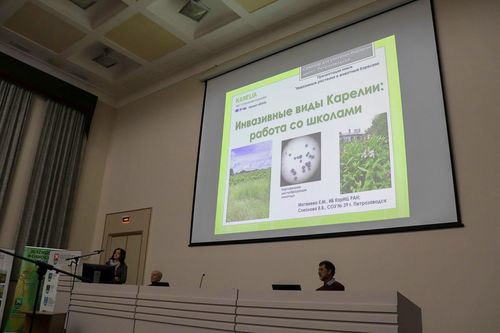
Secretary for Science at the Institute of Biology KarRC RAS Elizaveta Matveeva shared the experience of project activities involving schoolchildren. In particular, children from Petrozavodsk school #39 took a survey of the Himalayan balsam across the city during the summer season. At the start of the academic year, they presented their findings to classmates.
As Elizaveta Matveeva remarked, the level chosen for the activities was high school. This is the stage where environmental mentality, knowledge and skills are formed in teenagers, as well as environmental stewardship ethics and environmental sustainability approaches.
The background for cooperation within the project is long-standing contacts of KarRC RAS institutes with schools for involving students in research activities.
– The project results evidence the high potential of cooperation with schools on the topical issues of biodiversity conservation and environmental protection, – the researcher summed up.
In conclusion, scientists made an announcement of the opening of the Museum of Applied Environmental Research at the Karelian Research Centre RAS forthcoming on September 26. The Museum will be a great platform for educating children and adults and for scientific communication.
Teachers, in their turn, asked scientists about collaboration opportunities and the possibilities of bringing schoolchildren to visit the Karelian Research Centre RAS. The authors of the book supported the idea of perpetuating the collaboration and advised teachers to contact KarRC RAS institute administrations.




